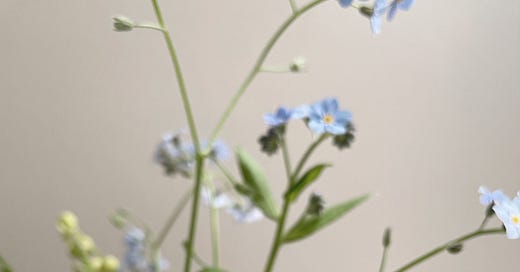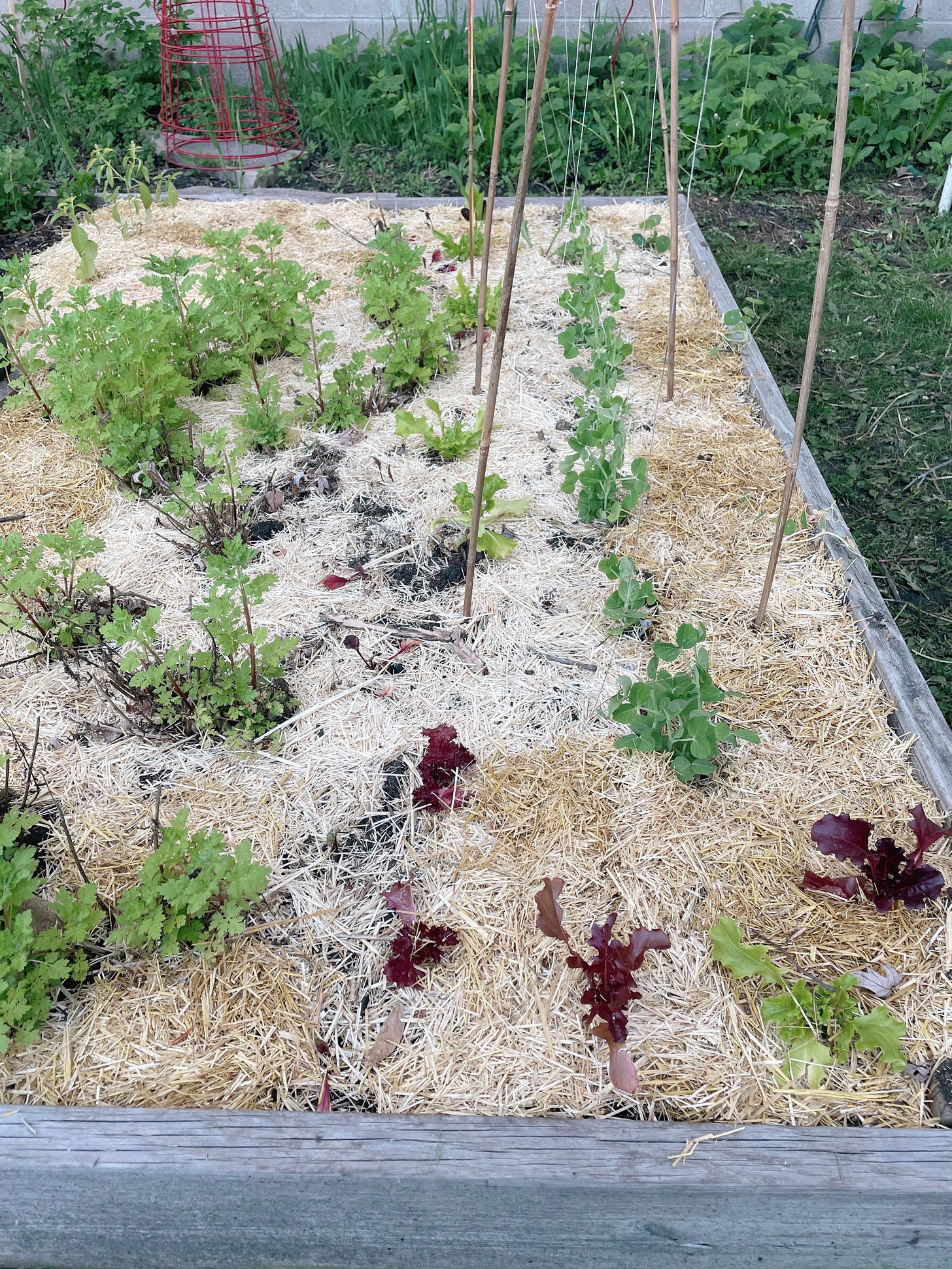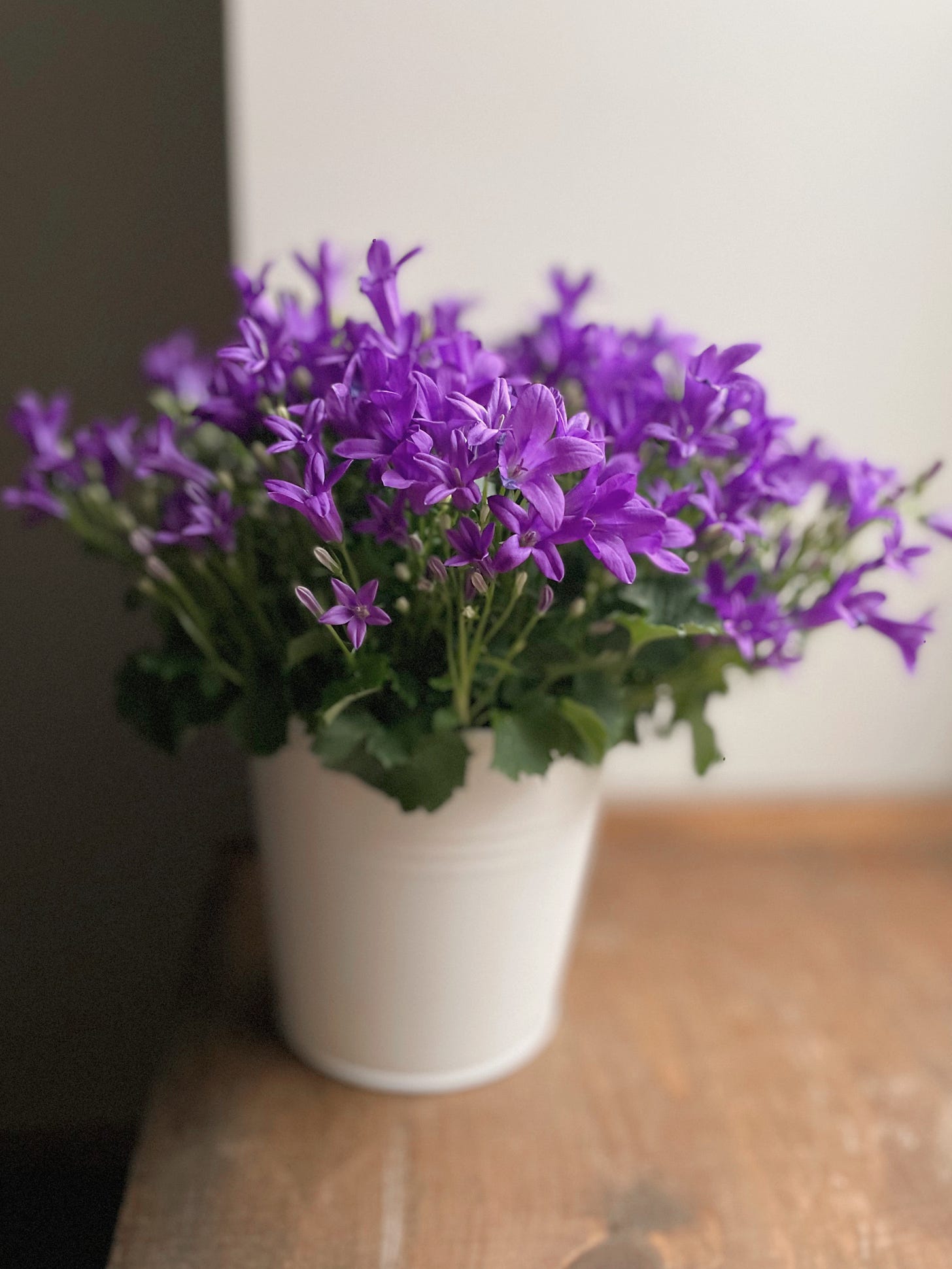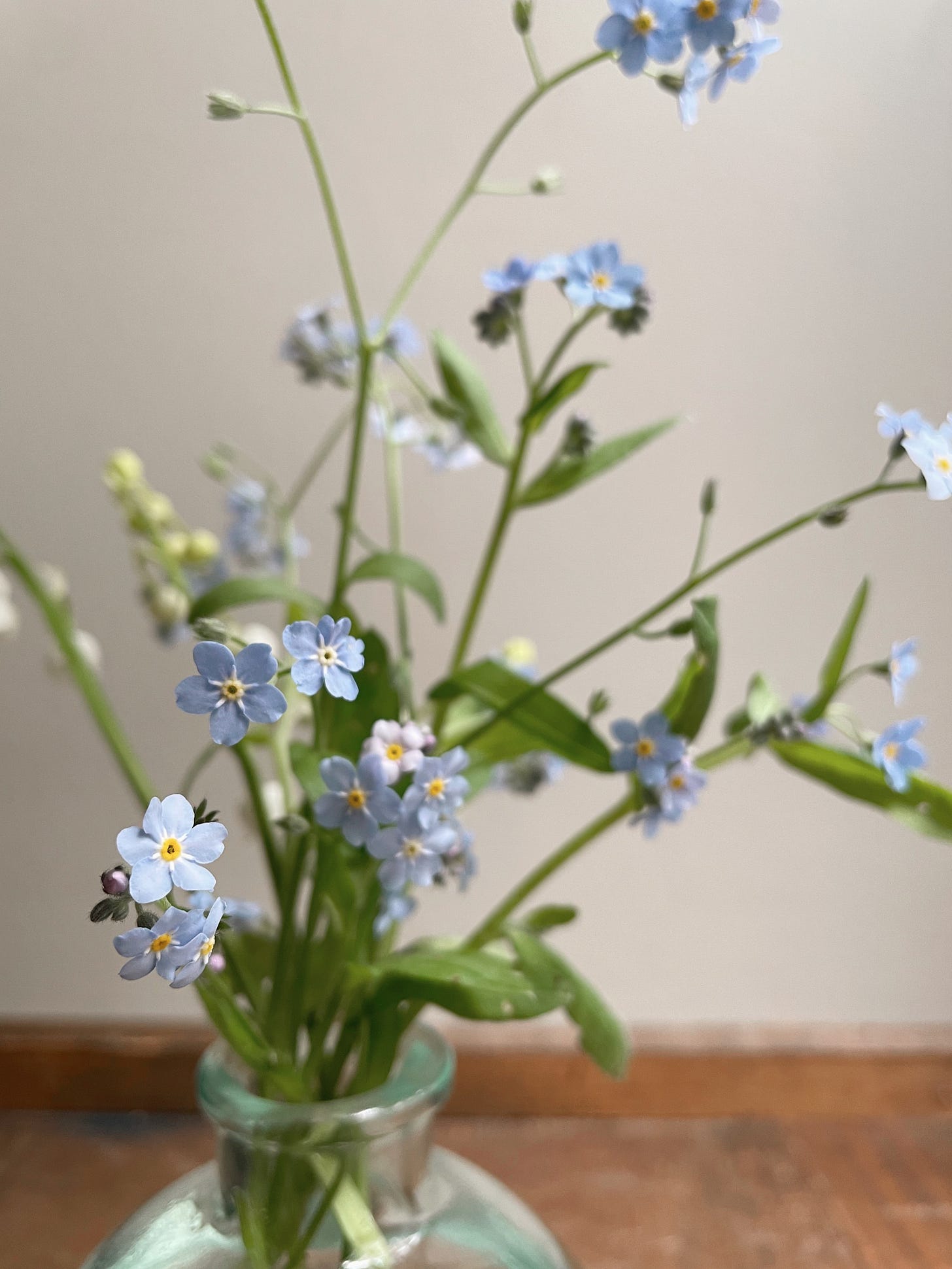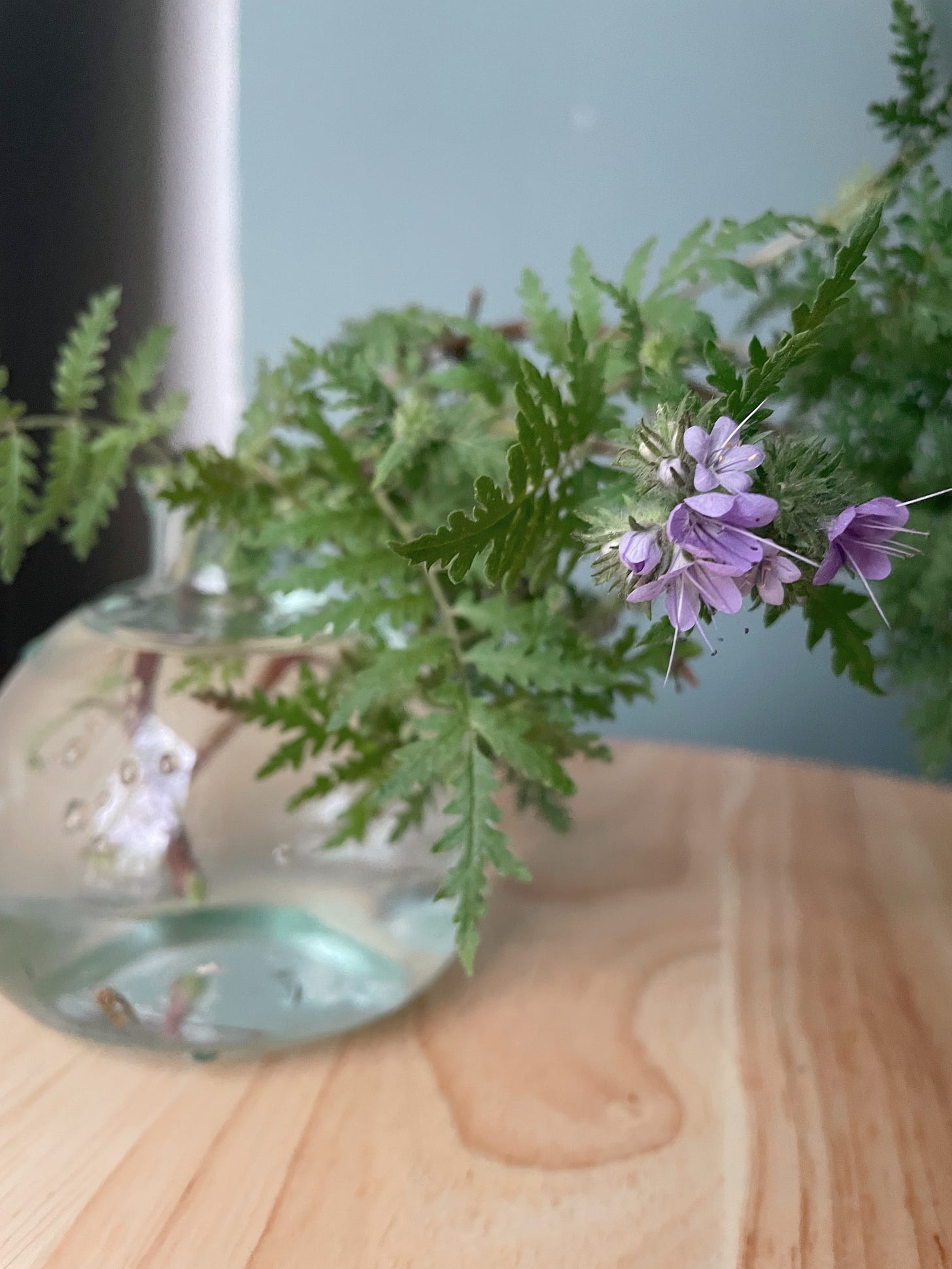Rewind
The spring gardens look clean and organized. Flowers grow obediently in rows. Plants play nicely by honoring each other’s boundaries. I love this tidy, cohesive aesthetic. It looks well-tended; I feel accomplished.
But, of course, a spring garden, albeit tidy, produces few flowers. By June, rows will become riotous, flowers will toss heavy petals rambunctiously, and I will struggle to find a clear path anywhere amongst the raised beds. I’ll plod up the slight hill, arms full of flowers, feeling satiated and inspired in an entirely different way.
The largest raised bed in the kitchen garden is nearly planted: peas, carrots, lettuce, beets, feverfew, basil, parsley, rosemary, thyme, nasturtium along with assorted flowers to attract pollinators, like salvia, strawflower, and clematis.
Purple campanula — an end-of-year gift from a student — boasts delicate purple blossoms. I’ve added the entire plant to an outdoor container garden to extend its life through the summer growing season.
True blue and periwinkle flowers only grow during the spring season: grape hyacinth, Virginia bluebells, cherry blossoms, and assorted foliage from native plants.
Another riff on the theme of blue: pulmoneria, forget-me-nots, and ajuga.
Forget-me-nots are so sweet and beautiful, they can make a bouquet with no assistance from another flower.
I pulled this picture from the archives — it shows the first and only time I grew a flower called bee’s friends. I liked the pale purple color of the blossom, but its overall was too droopy for my taste.
Another favorite photo from the archives. I can’t go through a spring season without making at least one fleeting lilac bouquet. Because lilac blossoms are notoriously hard to preserve in a floral arrangement, I smash the tips of the woody stem to facilitate water uptake.
See a photo you like? You can now purchase my photography in my online shop. As always, let me know what you are growing this season and what you think of this month’s photo essay.
-Betsy

